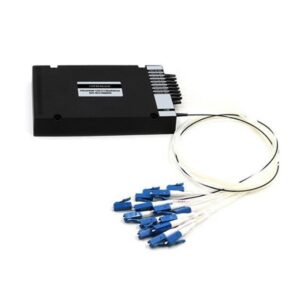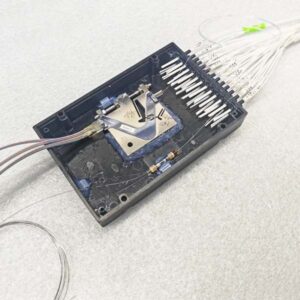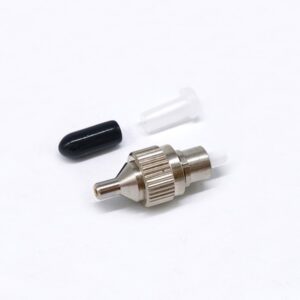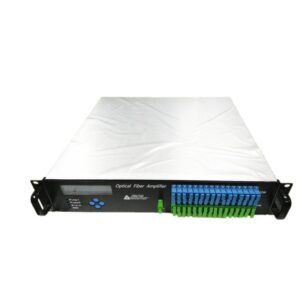There are mainly two types of optical distribution network (ODN) splitting methods: primary splitting and secondary splitting, as shown in Figure 1. Due to the limitations of PON equipment’s optical power and bandwidth, the total split ratio of ODN is generally 1:64 splitter.

When adopt primary splitting, the splitter is generally set at distribution cabinet; When adopt secondary splitting, the first splitter is generally set at the distribution cabinet, and the second splitter is generally set at the fiber distribution box.
So, what are the differences between primary and secondary splitting?
What scenarios are they applicable to!
Number of fiber cores in the introduction section
When adopt primary splitting, the number of fiber cores allocated by the splitter box (the fiber cores from the distribution cabinet to the distribution box) is mainly related to the number of households covered by the splitter box and the distribution ratio (number of configured ports/number of households covered);
For example, when a fiber optic distribution box covers a residential unit of 12 households, if the wiring ratio is 50%, the number of fiber cores allocated to the distribution box is 12 × 50%=6 (cores); The fiber optic cable cores allocated to the fiber distribution box are generally 6, 8, and 12 cores, as shown in Figure 2.
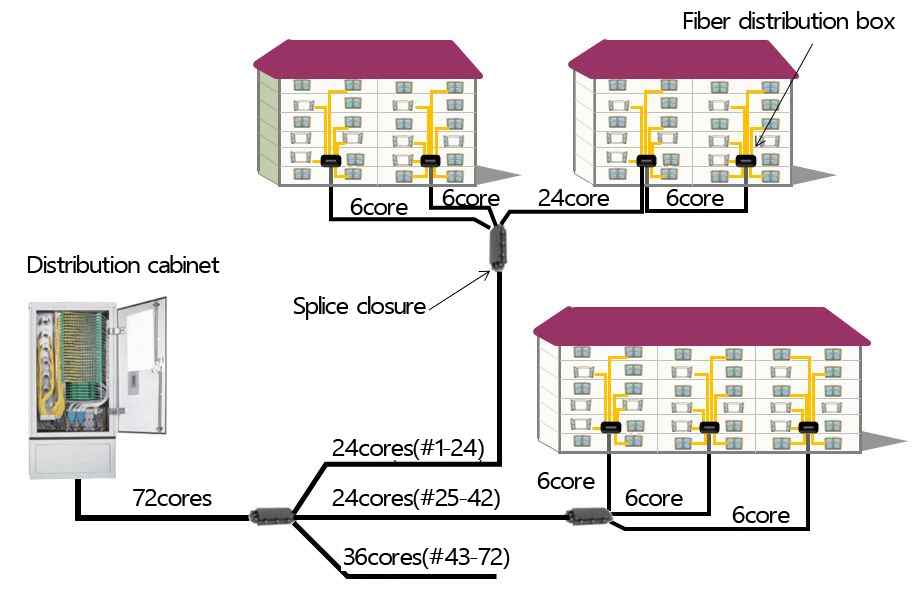
When adopt secondary splitting, regardless of the number of households covered by the splitter box, the number of fiber cores allocated by the splitter box is 2cores, with one core connected to the splitter and the other core as a backup, as shown in Figure 3.
Note that the allocated fiber cores in the optical cable refer to the number of fiber cores that is terminated at the cabinets, which may not necessarily be the same as the number of cores in the optical cable.

Obviously, when using primary splitting, the number of introduced cable fiber cores increases with the number of households covered; When adopt secondary splitting, the number of introduced cable fiber cores is only related to the number of fiber distribution boxes (splitter box). For example, if a residential community has a total of 50pcs fiber distribution boxes, and each box covers an average of 20 households with a wiring ratio of 50%, the total number of introduced fiber optic cables is like this:
- Primary splitting: should not be less than 50x20x50%=500 cores;
- Secondary splitting: should not be less than 50 x2=100 cores.
Convenience of operation
For primary splitting, the upstream direction port of the optical splitter is already connected to the upstream distribution cable during the construction. When installation, the personnel generally need to go through the following steps to complete the connection of the external optical cable:
(1) Find the free port A in the fiber distribution box that covers the users to be installed;

(2) Go to the junction box (cabinet) where the splitter is installed and find the corresponding port B of the free port A in the cabinet;
(3) Connect the designated free port in the downstream direction of the splitter to port B.

For secondary splitting, the upstream and downstream ports of the primary optical splitter have already been connected with the distribution cable and introduction cable during the engineering phase. When installing, only found the corresponding idle ports in the fiber distribution box covering the users accordingly to the network management data.
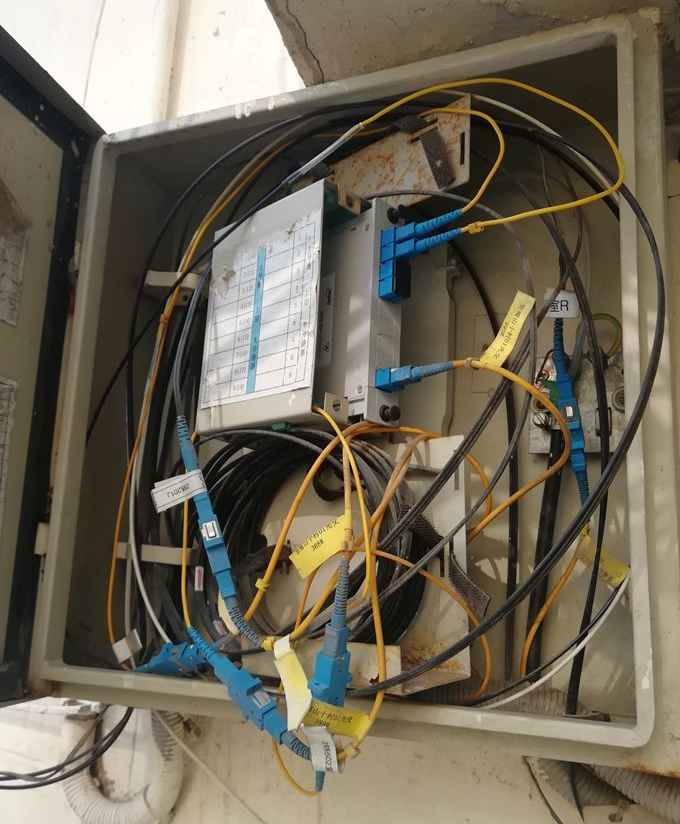
Obviously, the installation is much more convenient when using secondary splitting than primary splitting.
Full process attenuation of ODN links
Under the same split ratio, the sum of the insertion losses of the two optical splitters used in the secondary splitting is greater than that of the splitter used in the primary splitting.
For example, 1 pc 1x 64 the insertion loss (ABS module splitter) is 20.9dB, 2pcs 1×8 splitter total insertion loss (1 ABS module splitter, 1 chassis LGX splitter) is 22dB. Note that splitters with the same split ratio have different insertion loss if with packaging type.
In addition, when using a secondary splitting, it is LGX splitter in the fiber distribution box (splitter box), with a total of 2 movable joint; When using a primary splitting, there will only be one flexible joint at the splitter box; As shown in Figure 4.

Therefore, when using secondary splitting, the overall attenuation of the ODN link is about 1.6dB greater than that of the primary splitting (the attenuation of the movable joint is calculated at 0.5dB).
Occupation of PON port and backbone fiber core
Take a case for example
A multi-layer community with a total of 60 units, each with 6 floors, with a total of 12 households per unit and a total of 720 households in the community; Each unit is equipped with a fiber distribution box.
During the engineering phase, when use primary splitting method, as there are no users, only one 1×64 splitter needs to be installed, which occupying 1 core backbone and 1 PON port; When us secondary splitting method, if each fiber distribution box is installed with a 1×8 splitter, then additional 8pcs splitter (60/8 rounded upwards) need to be installed at the distribution cabinet, which occupying a total of 8 core backbone and 8 PON ports.
During the installation, if the penetration rate (actual installation users/covered households) reaches 30%, that is, 219 households; When using primary splitting, it requires occupying 4 (219/64 rounded up) core backbone and 4 PON ports; When using secondary splitting, still only need 8 core backbone and 8 PON ports.
It can be seen that the occupation of PON ports and backbone fiber cores is greater than that of the primary splitting method when using the secondary splitting method.
Expansion method
The ODN, which originally used primary splitting, will result in the coexistence of primary and secondary splitting after expansion, it may bring inconvenience to network maintenance. (Special analysis for the next issue).
ODN investment
The main factors that have a significant impact on the investment difference in ODN construction if use primary or secondary splitting are as follows:
(1) The introduced cable fiber capacity is relatively large under the primary splitting;
(2) Under the primary splitting method, there are more fiber optic cable cores terminated at the distribution cabinet and the fiber distribution box (fiber splitter box);
(3) The secondary splitting takes up a lot of the backbone fibers and PON port.
According to calculations, primary splitting investment of ODN is higher than that of the secondary splitting under different wiring ratios, as shown in Table 1.
Table 1. ODN investment ratio of Primary and secondary splitting
(Secondary/primary)
| Distribution ratio | 30% | 50% | 100% |
| Multi-layer | 1.02 | 1.14 | 1.28 |
| High-rise buildings | 1.05 | 1.19 | 1.45 |
| Dense high-rise buildings | 1.13 | 1.26 | 1.57 |
From Table 1, it can be seen that in almost all scenarios, the ODN investment using secondary splitting is less than that of primary splitting; The higher the wiring ratio and the denser the residents, the greater the investment difference.
In areas with low household density, such as rural and villa areas, although there is not much difference in the number of cores of optical cables when using primary and secondary splitting, investment differences still exist due to the different number of cores terminated, only not so significant.
Suggestions for the use scenario
Compared with the secondary splitter, the primary splitter is insufficient in terms of investment, installation convenience, and expansion. Although the attenuation of the primary splitting ODN link is relatively low, the current optical power of PON equipment has fully met the needs of the secondary splitting. Therefore, the current ODN mainly adopts secondary splitting.
But in the community where internal pipelines are jointly built and shared, the boundary point between the operator and developer networks is distribution cabinet, as shown in Figure 5; The optical cables introduced into the fiber distribution box and the drop cables of each household are fused one by one, so in this case, it is advisable to adopt primary splitting.


